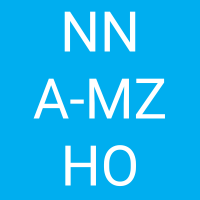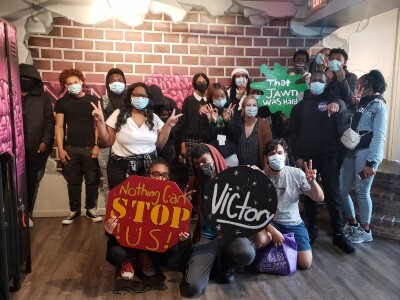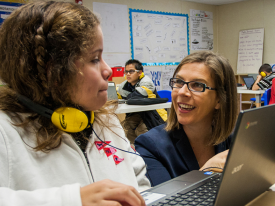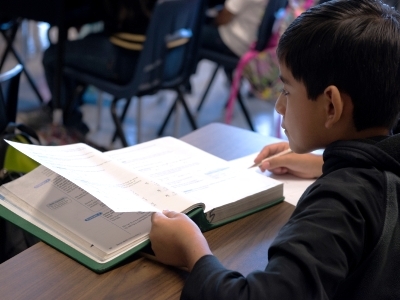What It Takes to Move from Tokenized Student Involvement to Meaningful Student Voice Work
Topics
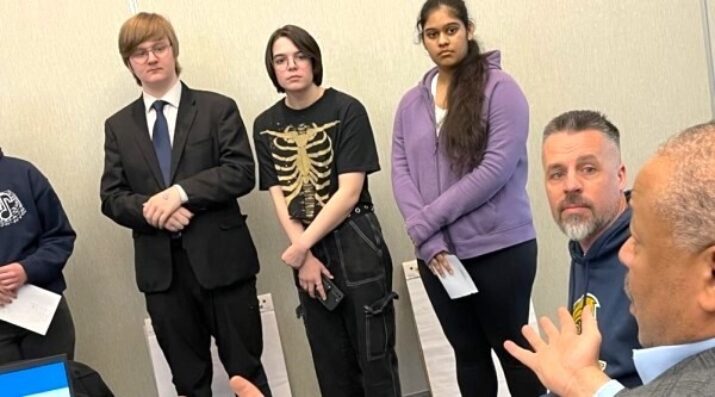
Together, educators are doing the reimagining and reinvention work necessary to make true educational equity possible. Student-centered learning advances equity when it values social and emotional growth alongside academic achievement, takes a cultural lens on strengths and competencies, and equips students with the power and skills to address injustice in their schools and communities.
To support student agency and meaningful student participation in their schools and their learning, we need to listen to student voices in different, better ways.
Stepping into the Student Voice Work
The Abbotsford School District has been involved in holding students as important partners in their learning for the last 20 years. We have instituted structures such as YC34, which brought together leadership students from multiple secondary schools to engage in student leadership activities and to promote topics of interest that supported the direction of schools. These activities included annual conferences, surveys, and joint activities with students across all of our secondary schools.
However, unknowingly, these student voice activities in the school district reinforced what historically has been done in schools to marginalize the voices of students. It tokenized the involvement of students in issues of importance when it comes to key strategic decisions about their learning in the classroom. This led to an increasing disconnect between students and teachers as evidenced by our data collected through the Youth Development Instrument (YDI) and empathy interviews with students.
In 2018, senior leadership of the school district made a conscious effort to shift the ways in which we viewed student voice, through our involvement with Shane Safir and John Watkins in the Deeper Learning Dozen Project through Harvard University. It began with a significant re-tool of our student engagement strategy, where we began reaching out to students “at the margins” to authentically engage with them about their school experiences, both positive and negative. In particular, the partnership with Shane Safir led to the uncovering of inequities in the system through supporting the adults to gather and listen to students through the collection of “street data.” This was in part to directly counter the hegemonic and tokenistic practices of the past and ensure authentic steps were taken to include students as a part of the change process to improve student success in the school district.

Today, the student voice actions in the Abbotsford School District could be described as collaborative, co-constructed, inclusive, and transgressive. It pushes the boundaries of what it means to learn and considers what a safe school environment looks like for everyone. This supports what is found in the literature around evoking change in our educational system by confronting traditional power relations and promoting liberatory and collaborative approaches to student voice through dialogue and discomfort (see Michael Fielding’s 2004 article, Transformative Approaches to Student Voice: Theoretical Underpinnings, Recalcitrant Realities). Our partnership with educator and author Shane Safir has evolved as well, supporting us to have students seen as partners where strategic inquiry and student experiences are central to the transformation of our secondary schools.
From a student perspective, this student-led environment is necessary as it not only invokes confidence within a student but teaches them the skill of mastering their learning and actions, which translates into real-life applications. This makes the ongoing student voice work in the Abbotsford School District critical in changing a system that has remained relatively unchanged since the industrial revolution.
Our Theory of Change toward Equitable and Inclusive School Environments
Over the course of the last five years, the Abbotsford School District has been engaged in transformative deeper learning practices, where the co-construction of deeper learning experiences has been central to transformation of teaching and learning in our schools. This has been based on the three principles of (in)equity, symmetry, and emergence, which have been central to a theory of change that holds student voice and dialogical approaches as central tenets to system transformation; see the figure below.
The “messy middle” of this theory of change can be thought of as our communities of practice (CoPs) approach or social learning spaces. With our secondary students, and with the support of Shane Safir and author, leadership coach, and researcher Dr. Jamila Dugan, we have been engaged in CoPs for the last two years. Here, students have been invited into a systematic and structured approach to gather information (what Shane Safir and Jamila Dugan refer to as street data) that has helped to inform the experiences of students in our secondary schools in a way that is responsive, authentic, and representative of our entire student population. There has been incredible learning because of this process, and structures, such as our deeper learning blocks, continue to improve as students are given opportunities to share the failings—or lack of engagement during these instructional blocks—and the successes—where teachers and students co-construct with the principles of mastery, creativity, and identity to promote student learning and success. Paying careful attention to our theory of change allows us to attend to and be responsive to the voices of the system and adjust our actions and intentions to improve student success.
A Framework for Supporting Meaningful Student Participation
To transform the ways in which students were engaged in the strategic decision-making process of the school district, a framework was needed to guide the ways in which we structured student voice actions. The next figure shows the continuum of transformative student voice action that we have been engaged in and the challenges associated with them.

This student voice model outlines a continuum of actions to be taken with students in our transformational efforts to improve schools.
In our efforts to support student agency and to engage in meaningful dialogue with students, the adults needed to be prepared to listen to students and to engage in practices, such as Kiva Panels and empathy interviews, that at times would feel uncomfortable. From a system perspective, we needed to be prepared for increased resistance to change as approaches became more transgressive and as we held students as authentic partners in reshaping the learning experiences in classrooms in our schools. In essence, we were engaged in what Margaret Wheatley described as connecting the system to more of itself.
While creating disturbance in the system is important to catalyze change, having a system that is singularly focused on student agency can hinder progress. There needs to be a state of equilibrium with the previous system to support both students and teachers in their efforts to gain familiarity and adapt to the new system. While having a system that embraces the resistance that comes with change is important, authentic partnership with students and listening in a meaningful way to students takes time and commitment to establish.
What It Means to Listen Authentically
The question of what it means to listen with authenticity to students is something that we have carefully considered over the course of our journey the last four years. Students have repeatedly told us that they are tired of telling their stories and not having adults respond or do anything with that information. We continue to carefully consider how we approach this, and along with our structures for student voice, continue to reshape our “ways of being” with respect to unconscious bias and privilege. We continue to get better at understanding whose voice is not being heard and holding ourselves accountable to our work toward equitable and inclusive environments as we seek a world-class education for each student in our school district. This means that we work to engage with what each student is saying, expand on their ideas to see how they connect with the strategic direction of the school district, and create pathways for dialogical approaches that bring thought processes together for new innovative thinking, rather than tokenize to replicate the patterns of old.
What Have We Learned?
Student agency plays a critical part in the transformation of our education system and student voice holds promise in supporting the kinds of change that promotes and supports student agency and our vision of a world-class education in the Abbotsford School District. Our journey with student voice has shown that it can impact the school system in multiple ways and that taking a student-centered approach will be essential in the reshaping of our education system. While resistance is to be expected, taking a collaborative and authentic listening approach with students holds great promise in achieving our collective goal of improved student success.
All photos courtesy of Abbotsford School District.

